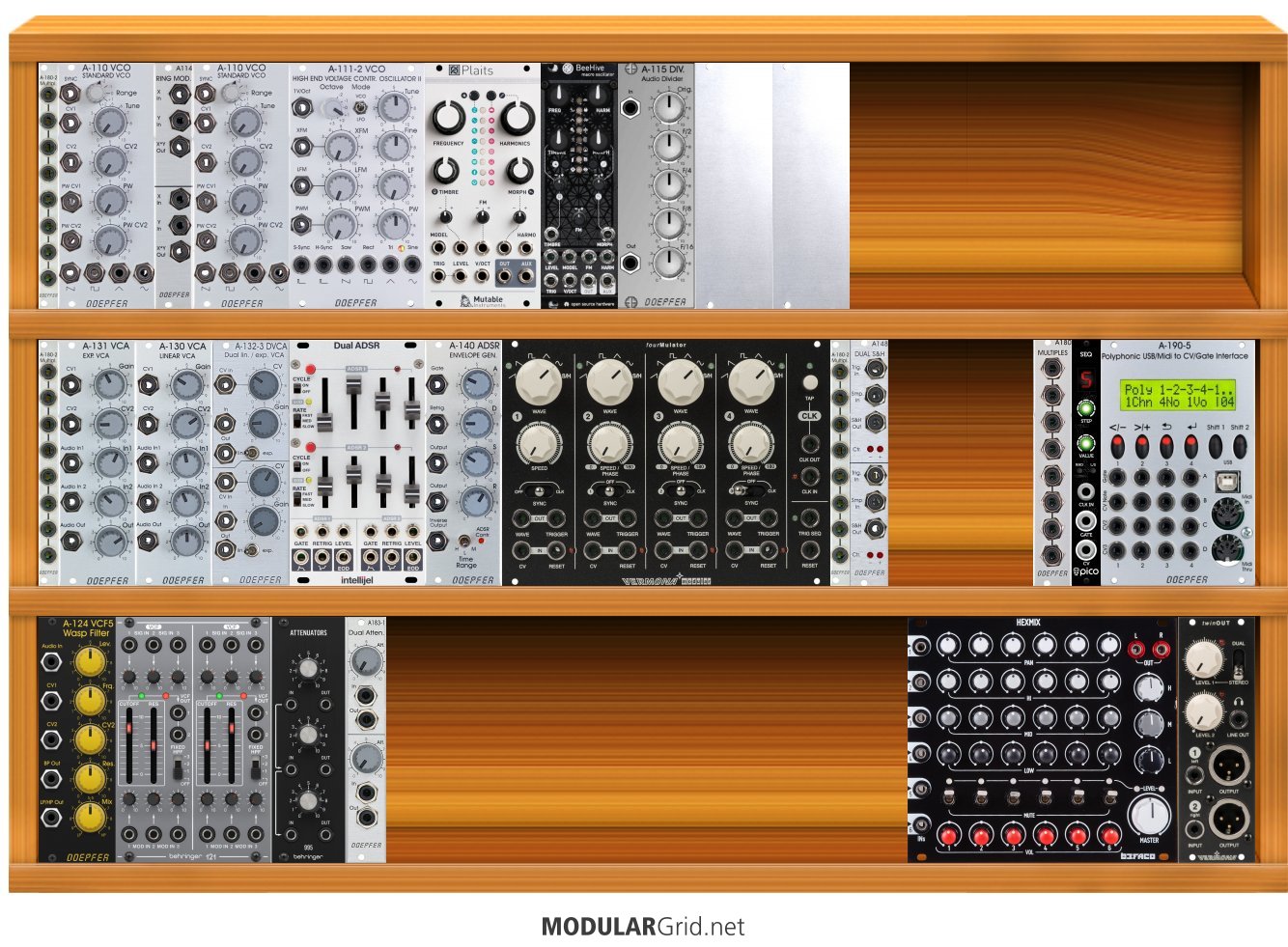Hi guys.
Build my first modular over the xmas days and gave it a spin.
Basically it's three rails of 108 in Size into a IKEA Cupboard. The width doesnt fit perfectly, have to finde a solution on how to fix the rails to the left. To the right their screwed to the cupboard walls.
I can post some pics if you like.
My main question is: Do you have some tips into what else I should build into the rack?
I am not looking into generative music or the like. My music is mostly DnB and I am looking for some other, unique sounds to my sound palette.
So straight forward Bass, reese Bass or Pad like sounds.
I think oscilator wise I am well equipped but I guess some other filters or other mangling processors could be fun.
Any idea?
With kind regards
Jan
P.S.:
This is the correct link:
https://cdn.modulargrid.net/img/racks/modulargrid_309246.jpg
Somehow it is being shown with a Neutron which I do not own.


